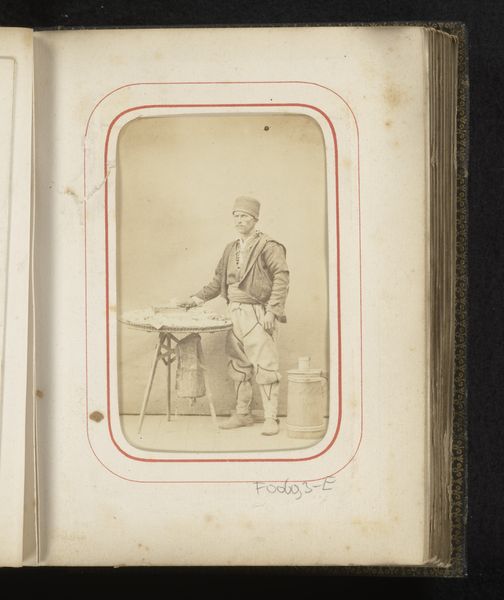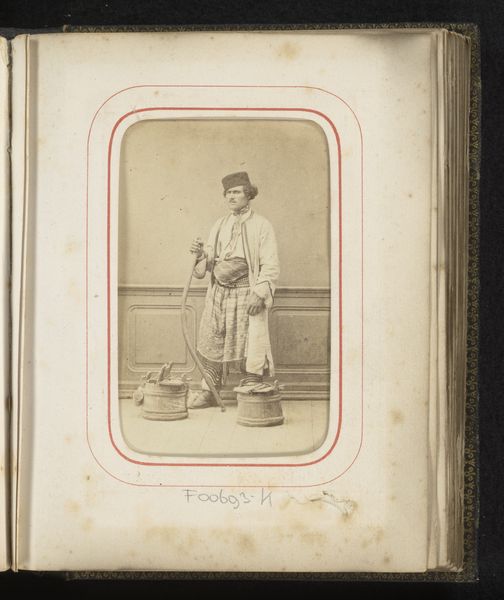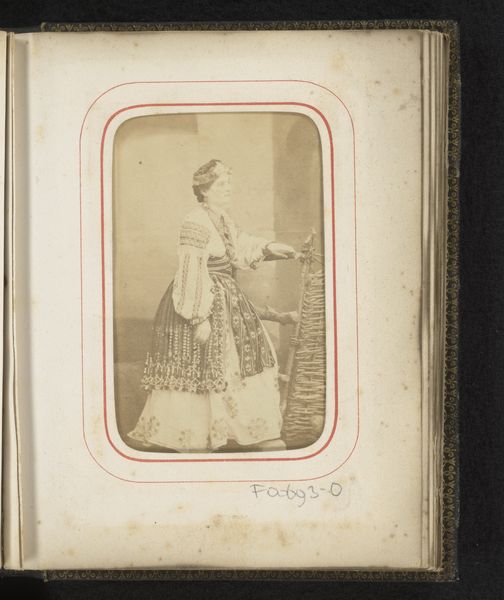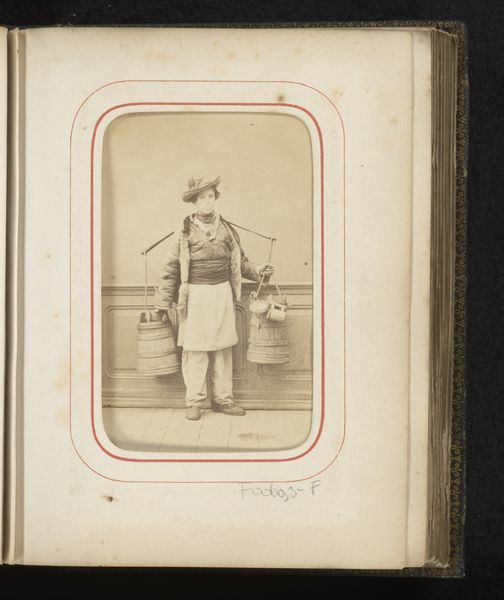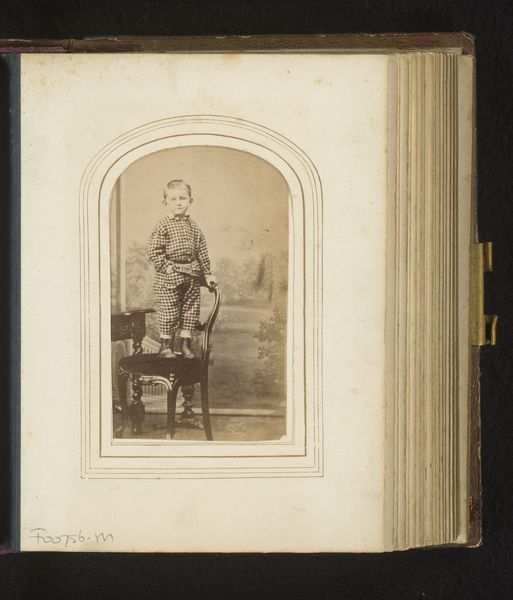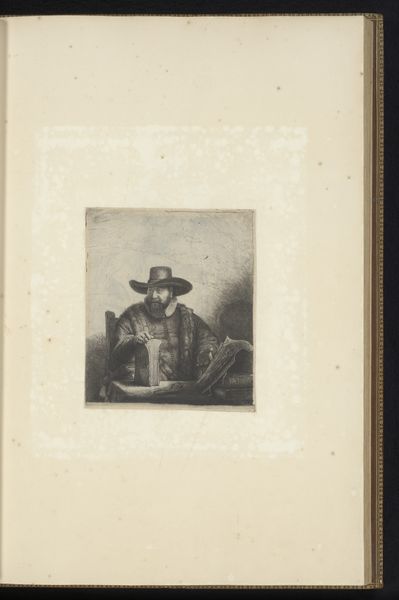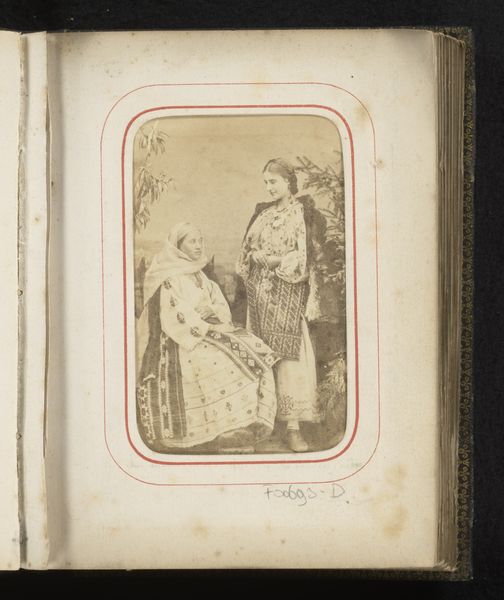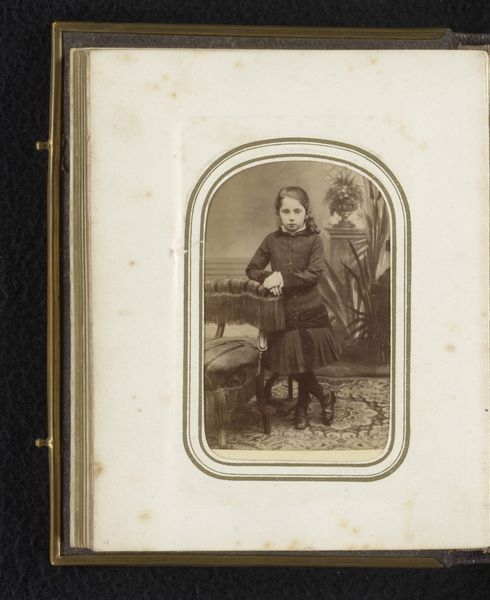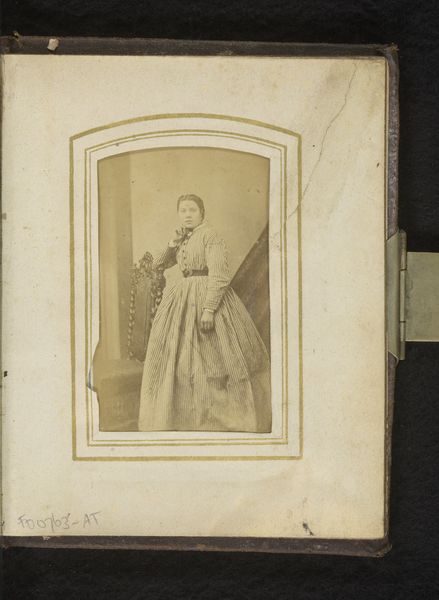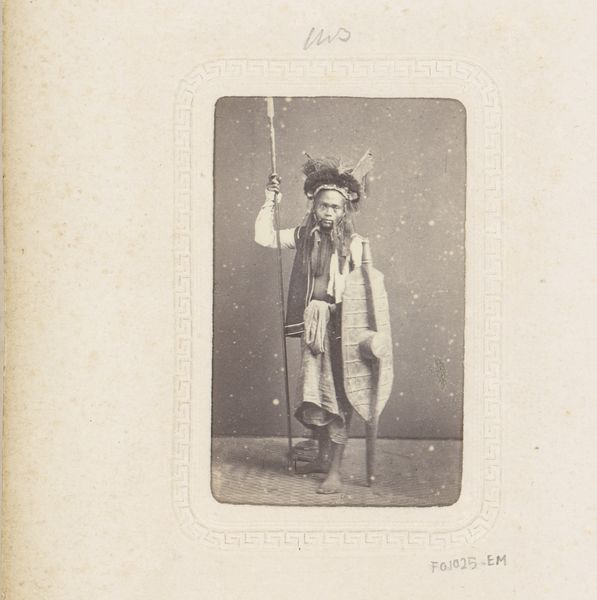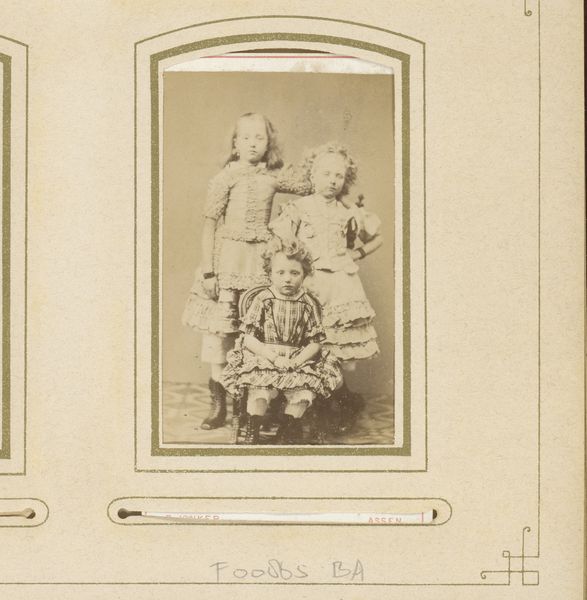
Portret van een man gekleed als ruiter in Roemeense klederdracht met zweep in de hand 1870 - 1890
0:00
0:00
Dimensions: height 85 mm, width 52 mm
Copyright: Rijks Museum: Open Domain
Curator: This photograph, "Portret van een man gekleed als ruiter in Roemeense klederdracht met zweep in de hand," created between 1870 and 1890, is attributed to Carol Popp de Szathmari. The medium appears to be gelatin silver print, and we can see a photographic print mounted into what appears to be an album. Editor: Immediately I see a certain… swagger! The posture, the ornamented clothing, even the way the light catches the edge of his cape—it’s all very deliberately romantic, bordering on theatrical. Do you think the artist was aiming for realism, or constructing something more fanciful? Curator: That's interesting. Given Szathmari’s position as a court painter and photographer, he likely worked within the prevailing artistic trends of the time, but one that was heavily shaped by class distinctions and expectations for portraits and documentation. Gelatin-silver printing, though technically advanced for its time, would have been just one of many choices involved. The printing process itself often served to elevate rather than strictly capture, even as industrial modes of portrait production and representation of local custom started taking off. Editor: I wonder if that "swagger" I see is meant to project power, given the presence of the riding crop. And what's with all the ornamental detail? There's embroidery and lots of lace... but I feel like there is a tension between its possible opulence and the rather modest home exterior in the photograph’s backdrop. Perhaps Szathmari used artifice as a lens for realism? Curator: Absolutely. Consider how photographic processes were often subtly altered, manually, with color tints. The application of "coloured pencil" or "watercolor" might not only embellish the subject but imbue the print with notions of prestige and artistic craftsmanship which helped distinguish early photographies from other industrialized, more affordable forms. The artistic intention of portraiture had much to do with consumerist aspirations. Editor: It makes you wonder about the sitter—was he consciously participating in shaping a certain national identity? Did the artist consciously construct and capture that "idea"? Because what really strikes me is how modern it feels. It speaks to our curated online personas, the ones we laboriously present to the world, don’t you think? Curator: Indeed. Understanding art from this era involves examining how cultural representation, and visual traditions intersected with social, economic forces—from the artist's choice of materials to how and where they were accessed, circulated, or ultimately consumed, all offer valuable insights. Editor: Well, this picture and our conversation really get one to think how the performance of identity is certainly not a contemporary invention. Curator: A perfect observation, and one that reminds us that we never see just the person in any work of portraiture.
Comments
No comments
Be the first to comment and join the conversation on the ultimate creative platform.
